Dec. 4 to Dec. 10
Chou Tsung-lu (周宗魯) prayed as usual before he headed into Haishan Tunnel No. 1 in New Taipei City’s Sanxia District (三峽) in the late morning of Dec. 5, 1984.
“I must pray every time because it’s quite dangerous down there,” he writes in his biography, Run from Death (突破死亡線), by Ho Hsiao-tung (何曉東). “If I don’t have the protection of Jesus, there’s a huge chance I’ll die.”
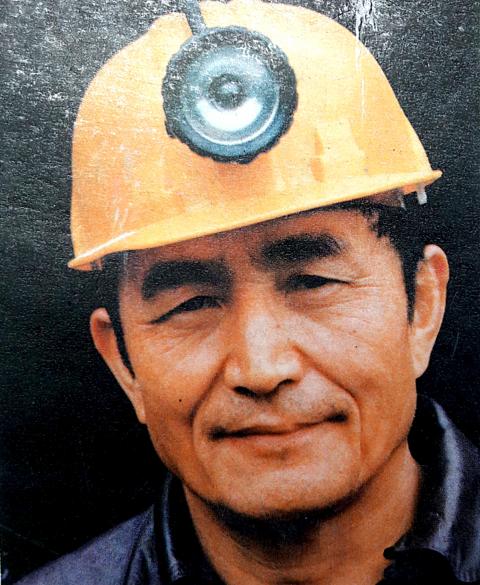
Photo: Han Cheung, Taipei Times
Chou was about to start drilling when he was thrown to the ground by a violent burst of wind, knocking off his helmet. Smoldering coal dust scorched his face, and when it subsided he had to make sure he was still alive.
Screaming “Lord,” Chou ran as fast as he could out of the tunnel, past a charred body into a chamber where survivors were all frantically praying to different deities. He kept running upward and found an airpipe several levels above, which kept him alive as his 92 companions dropped one by one to carbon monoxide poisoning.
Surviving underground for 93 hours by drinking urine and eating human flesh, Chou was the sole survivor of the Haishan No. 1 Tunnel mining disaster, the final of three deadly incidents in 1984 that killed at least 270 miners and accelerated the demise of Taiwan’s coal industry.
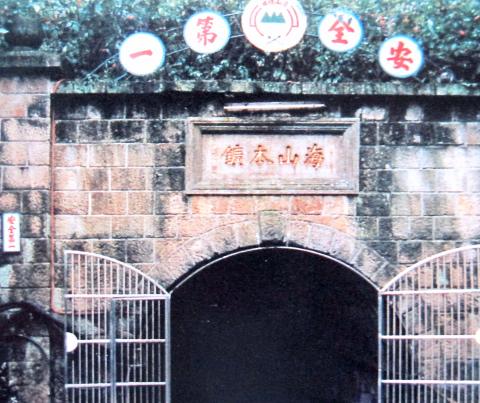
Photo: Hsin Yue-hung, Taipei Times
BOOMING INDUSTRY
The closing of Taiwan’s last operating coal mine in Sanxia in 2001 marked the end of 125 years of coal mining in the country, starting with the Badouzih mine (八斗子) in Keelung, which opened in 1856.
According to a document by the Chinese Institute of Mining and Metallurgical Engineers, between 1945 and 1996, a total of 130 million tonnes of coal was procured from these underground passages, peaking between 1964 and 1969, when each year’s production exceeded 5 million tonnes. In 1967, an estimated 58,000 people toiled in 366 mines across the country.
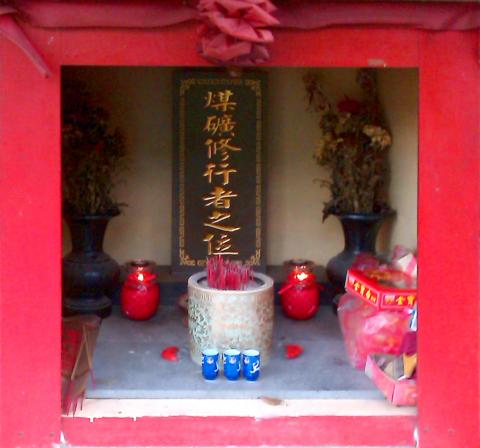
Photo: Liu Yen-fu, Taipei Times
It was a dangerous operation, but with coal providing up to 60 percent of the nation’s energy in the 1960s, production was valued over safety and on average there were 83 accidents and 111 deaths per year between 1946 and 1969. The most common cause was falling rock, followed by gas and dust explosions.
The Bureau of Mines was established in 1970. It established safety laws and regulations in 1974 and 1976 and set up emergency response centers near mining districts. The death toll greatly decreased, with 22 in 1983. But things took a turn for the worse the following year.
On June 20, 1984, the first major disaster struck at the Haishan Mine (海山煤礦) in New Taipei City’s Tucheng District (土城). A rail car came loose and slid down a slope, hitting a high-voltage electric box and causing an explosion. Many survivors succumbed to carbon monoxide poisoning. The second incident on July 10 at Ruifang District’s Meishan Mine (煤山煤礦) was due to an electrical fire. The disaster Chou was involved in occurred due to an explosion of undetermined origin.
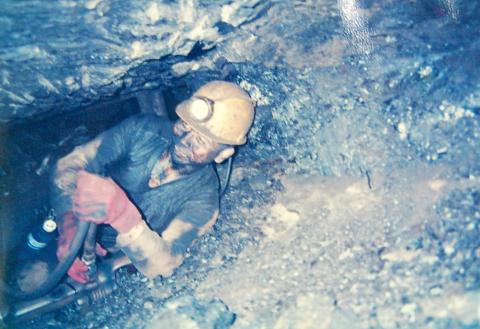
Photo courtesy of Huang Liang-yi
Taiwan’s coal industry was already struggling due to competition from imported coal and the advent of other types of energy such as petrol, and these deadly incidents only sped up the decline. By 2000, there were only four operating mines in Taiwan, all located in Sanxia.
The Haishan No. 1 Tunnel incident was not the first disaster Chou encountered. In 1979, he missed work for reasons he can no longer recall, narrowly avoiding several explosions in the Chungyi mine (忠義煤礦), also in Sanxia.
The Chungyi mine was one of the hottest and most dangerous mines — Chou says two miners could drink 5 liters of water in two hours. They also had fans blowing cold air from a block of ice, but Chou says they still tried to get in and out as quickly as possible.
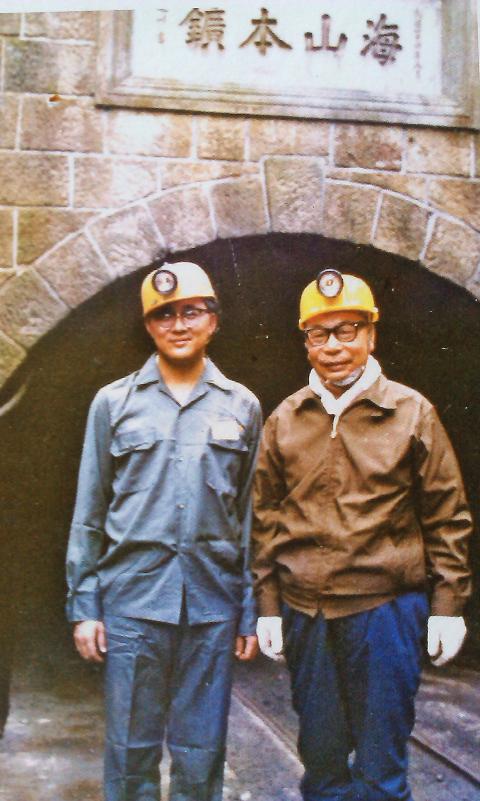
Photo: Liu Yen-fu, Taipei Times
The conditions in Haishan Tunnel were much better, but Chou says he almost died there as well — once from accidentally inhaling poisonous gas from a wind pipe. The second time, he went into the tunnel unaware that there was an unexploded stick of dynamite hidden behind a rock. Luckily, his drill malfunctioned and only later did he find the dynamite right under where he was about to drill.
URINE AND HUMAN FLESH
After the mining disaster, Chou was afraid to leave his life-saving air pipe. Extremely thirsty, he urinated into his helmet and tried to drink it.
“No wonder people joked that it was ‘Shandong hot and sour soup,’” Chou writes. “I did not want to take another sip, but I didn’t want to dump it either. So I left it there, occasionally using the urine to wet my cracking lips.”
He dipped a cloth in urine and used it as a face mask to explore the area, finally finding half a sip of water left in a canteen. Later, he managed to find water dripping from a crevasse. It took two hours to fill up the canteen.
With his thirst quenched, Chou was now hungry. He had gone hungry before, going for several days without food while in the army and also took part in Christian fasts several times. There was absolutely nothing to eat in the tunnel, and Chou prayed: “Lord, I’m going to have to eat human meat.”
“God didn’t stop me, but who would find it an easy feat to eat human flesh — especially those of my compatriots?” he says. “Someone asked me later how human flesh tasted. I can’t really say — it was raw and I swallowed it with water without chewing.”
It took several attempts before Chou was able to swallow the piece of meat without vomiting it back out. This would impact his social reputation later on.
“After I was rescued, I heard someone say, ‘Chou Tsung-lu ate human meat, we can’t be friends with him anymore!’” Chou says.
A newspaper report came to his defense, announcing that it was not illegal to consume human flesh in dire situations, and also deemed the act acceptable from both Christian and Buddhist perspectives.
Chou now had enough energy to plan his escape — but the passageway was blocked. After frantically digging for a while, he retreated to his original location to wait for help. As he was about to give up on the fifth day, he returned to the blocked tunnel and found that there was now a small opening. He passed through and continued upward until he heard the voices of rescue personnel. He was saved.
In the aftermath, the Bureau of Mines conducted inspections of coal mines across the country, finding 70 of them not up to par. The Ministry of Economic Affairs also established stricter safety policies for coal mining the same year. There were still about 16,000 miners in Taiwan by 1984, but the government started phasing them out in 1985 by helping them find new professions and assisting the mines with severance pay.
By 1994, there were only about 1,000 miners left. When they retired, Taiwan’s coal industry was done for good.
Taiwan in Time, a column about Taiwan’s history that is published every Sunday, spotlights important or interesting events around the nation that have anniversaries this week.

The People’s Republic of China (PRC) last week offered us a glimpse of the violence it plans against Taiwan, with two days of blockade drills conducted around the nation and live-fire exercises not far away in the East China Sea. The PRC said it had practiced hitting “simulated targets of key ports and energy facilities.” Taiwan confirmed on Thursday that PRC Coast Guard ships were directed by the its Eastern Theater Command, meaning that they are assumed to be military assets in a confrontation. Because of this, the number of assets available to the PRC navy is far, far bigger

The 1990s were a turbulent time for the Chinese Nationalist Party’s (KMT) patronage factions. For a look at how they formed, check out the March 2 “Deep Dives.” In the boom years of the 1980s and 1990s the factions amassed fortunes from corruption, access to the levers of local government and prime access to property. They also moved into industries like construction and the gravel business, devastating river ecosystems while the governments they controlled looked the other way. By this period, the factions had largely carved out geographical feifdoms in the local jurisdictions the national KMT restrained them to. For example,

The remains of this Japanese-era trail designed to protect the camphor industry make for a scenic day-hike, a fascinating overnight hike or a challenging multi-day adventure Maolin District (茂林) in Kaohsiung is well known for beautiful roadside scenery, waterfalls, the annual butterfly migration and indigenous culture. A lesser known but worthwhile destination here lies along the very top of the valley: the Liugui Security Path (六龜警備道). This relic of the Japanese era once isolated the Maolin valley from the outside world but now serves to draw tourists in. The path originally ran for about 50km, but not all of this trail is still easily walkable. The nicest section for a simple day hike is the heavily trafficked southern section above Maolin and Wanshan (萬山) villages. Remains of
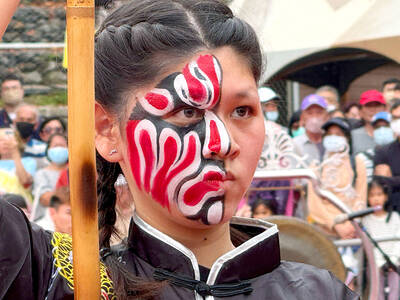
Shunxian Temple (順賢宮) is luxurious. Massive, exquisitely ornamented, in pristine condition and yet varnished by the passing of time. General manager Huang Wen-jeng (黃文正) points to a ceiling in a little anteroom: a splendid painting of a tiger stares at us from above. Wherever you walk, his eyes seem riveted on you. “When you pray or when you tribute money, he is still there, looking at you,” he says. But the tiger isn’t threatening — indeed, it’s there to protect locals. Not that they may need it because Neimen District (內門) in Kaohsiung has a martial tradition dating back centuries. On